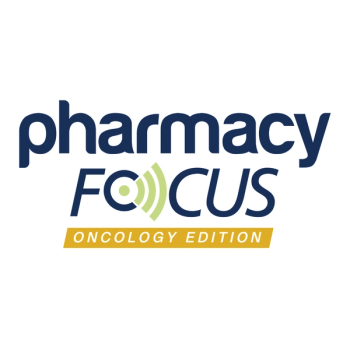
Redefining Pharmacovigilance Through Digital Innovation
AI is revolutionizing pharmacovigilance by enhancing data analysis, improving patient safety, and enabling proactive risk management in drug monitoring.
Leveraging Artificial Intelligence for Enhanced Pharmacovigilance
Pharmacovigilance remains the backbone of patient safety, tasked with the detection, assessment, understanding, and prevention of adverse drug reactions (ADRs). However, conventional, labor-intensive workflows are increasingly strained by data overload, inefficiencies, and growing complexity in safety monitoring. In response, artificial intelligence (AI) has emerged as a transformative force, reshaping how ADRs are identified, analyzed, and managed while creating opportunities for global data harmonization and real-time decision support.1
Modernizing Pharmacovigilance Through AI
Traditional pharmacovigilance processes—heavily reliant on manual case processing and review—struggle to keep pace with the vast amounts of data generated from electronic health records (EHRs), patient reports, medical literature, and social media platforms. AI offers innovative solutions through automation and advanced analytics, enabling pharmacovigilance teams to rapidly analyze and extract actionable insights from vast and diverse data sources.2
Strategic AI Applications in Pharmacovigilance
Several AI disciplines—including natural language processing (NLP), machine learning (ML), and explainable AI (XAI)—have become integral to modernizing pharmacovigilance operations3-6:
- Automated case processing and harmonization: AI-driven tools extract, filter, and reconcile data from structured sources (eg, spreadsheets) and unstructured sources (eg, clinical narratives, social media posts). NLP-driven systems enhance the ability to detect ADRs embedded within complex, unstructured datasets.
- Enhanced signal detection: ML models trained on historical safety data uncover subtle, multivariate patterns that suggest emerging risks—often months before traditional disproportionality analyses. These models continuously refine their predictive power as new data are integrated.
- Real-time, proactive surveillance: AI streamlines continuous, real-time analytics across multiple data streams, generating automated alerts that support efficient and informed decision-making, proactive interventions, and effective resource allocation—shifting pharmacovigilance from reactive to proactive risk management.
- Transparency and trust: XAI enhances transparency by providing clear, structured insight into AI model decision-making processes. This approach fosters trust and confidence among regulatory authorities, health care professionals, and industry stakeholders, ultimately supporting collaborative and informed decision-making.
Navigating AI Implementation in Pharmacovigilance
To fully realize the transformative potential of AI in pharmacovigilance, several pivotal challenges must be addressed2,5,7:
- Data quality and harmonization: AI models rely on high-quality, standardized data. Harmonization initiatives, such as the global adoption and application of medical dictionaries, notably the Medical Dictionary for Regulatory Activities, are critical to ensure accuracy, consistency, and standardization across global databases.
- Evolving regulatory expectations: Health authorities increasingly endorse AI, yet demand robust governance—comprehensive documentation, demonstrable model performance, privacy-by-design architectures, and continuous monitoring for bias. Although governance bodies continuously seek harmonization, compliance with variable guidelines demands sustained oversight and adaptability.
- Workforce development: Effective deployment of AI tools requires cross-functional training in both pharmacovigilance practices and advanced information systems. Investments in education, research, and global collaboration are essential to overcoming resource limitations, particularly in low- and middle-income countries.
- Balancing automation and human oversight: Although automation increases efficiency, expert judgment ensures accuracy and validity, especially for high-stakes safety decisions. A “human-in-the-loop” framework ensures contextual interpretation and ethical oversight.
AI-Driven Transformation in Pharmacovigilance
AI-powered innovations are actively shaping the future of pharmacovigilance. Initiatives include5,8,9:
- Risk score modeling: An ensemble of ML methods—most notably gradient-boosting models—integrate biomarkers, comorbidities, laboratory data, and clinical variables with traditional case-report information. These patient-centric models estimate individualized ADR risk on a continuous scale, enabling proactive safety stratification and targeted risk minimization.
- Indication discovery: AI-driven evaluations of real-world data can identify novel therapeutic targets for both pipeline and marketed products. This approach supports informed decision-making across various therapeutic areas, improving clinical and commercial outcomes.
- Advanced safety report preparation: Generative AI tools streamline the preparation of essential regulatory documents, such as Periodic Benefit-Risk Evaluation Reports and Safety Evaluation Reports, allowing safety teams to focus on qualitative analyses and strategic recommendations.
Conclusion
AI integration in pharmacovigilance augments—rather than replaces—human expertise, enabling pharmacovigilance teams to deliver faster, more granular safety insights while upholding evolving regulatory expectations. When implemented responsibly, AI enhances operational capabilities, transforms reactive surveillance into proactive risk management, and ultimately strengthens patient safety across the product lifecycle.
REFERENCES
Desai MK. Artificial intelligence in pharmacovigilance —opportunities and challenges. Perspect Clin Res. 2024;15(3):116-121. doi:10.4103/picr.picr_290_23
Liang L, Hu J, Sun G, et al. Artificial intelligence-based pharmacovigilance in the setting of limited resources. Drug Saf. 2022;45(5)511-519. doi:10.1007/s40264-022-01170-7
Sadaf DS, Sameer S. Pharmacovigilance and adverse event detection: a comprehensive review of artificial intelligence applications. Eur J Mod Med Pract. 2023;3(12):97-104.
Al-Azzawi F, Mahmoud I, Haguinet F, Bate A, Sessa M. Developing an artificial intelligence-guided signal detection in the Food and Drug Administration Adverse Event Reporting System (FAERS): a proof-of-concept study using galcanezumab and simulated data. Drug Saf. 2023;46(7):743–751. doi:10.1007/s40264-023-01317-0
De Abreu Ferreira R, Costa S, Moreira C, et al. A pilot predictive surveillance model in pharmacovigilance using machine-learning approaches. Adv Ther. 2024;41(6):2435-2445. doi:10.1007/s12325-024-02870-5
Lee S, Lim S, Kang J, et al. Explainable artificial intelligence for patient safety: a review of application in pharmacovigilance . IEEE Access. 2023;11:50830-50840. doi:10.1109/ACCESS.2023.3271635
Palatty PL, Sacheendran D, Jayachandran M. Mitigating challenges in pharmacovigilance In: Badria FA, ed. Pharmacovigilance - Facts, Challenges, Limitations and Opportunities. IntechOpen; 2024. doi:10.5772/intechopen.1005978
Serrano DR, Luciano FC, Anaya BJ, et al. Artificial Intelligence (AI) Applications in Drug Discovery and Drug Delivery: Revolutionizing Personalized Medicine. Pharmaceutics. 2024;16(10):1328. doi:10.3390/pharmaceutics16101328
Shamim MA, Arora P, Shamim MA, Dwivedi P. Artificial intelligence and big data for pharmacovigilance and patient safety. J Med Surg Public Health. 2024;3(2):100139. doi:10.1016/j.glmedi.2024.100139
Newsletter
Stay informed on drug updates, treatment guidelines, and pharmacy practice trends—subscribe to Pharmacy Times for weekly clinical insights.




















































































































































































































